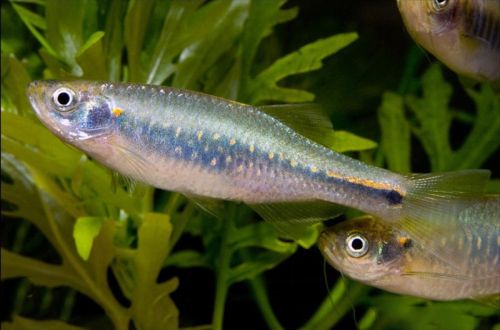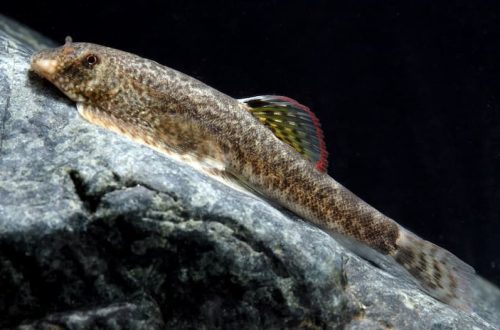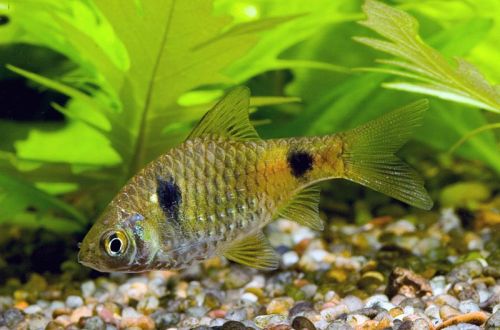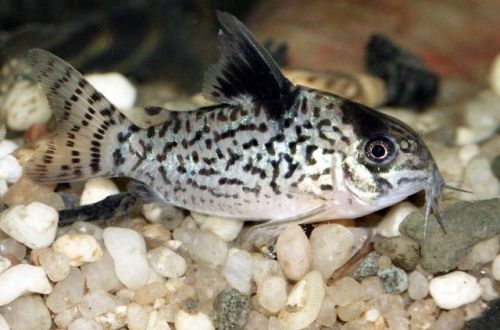
Danio Yoma
Danio Figradei or Danio Yoma, scientific name Danio feegradei, belongs to the family Cyprinidae (Cyprinidae). The fish is named after Burmese public health officer ES Feegrade. Another name is associated with the region where these fish were first collected – reservoirs at the foot of the Arakan-Yoma mountain range.
Available for trade since 2005. It is considered unpretentious and not costly to maintain a fish. May be recommended for beginner aquarists.

Contents
Habitat
It comes from Southeast Asia from the territory of Myanmar (Burma). The natural habitat is limited to the state of Rakhine, stretching along the western coast of the country between the Bay of Bengal and the Arakan Mountains (another name for Arakan Yoma). Fish inhabit the rivers and streams flowing from the western slopes of these mountains. Prefer shallow regions with rocky substrates, habitats usually do not have aquatic vegetation.
Brief information:
- The volume of the aquarium – from 200 liters.
- Temperature – 18-25°C
- Value pH — 6.5–7.5
- Water hardness – 2–12 dGH
- Substrate type – any dark
- Lighting – any
- Brackish water – no
- Water movement – light or moderate
- The size of the fish is about 6 cm.
- Food – any food
- Temperament – peaceful
- Content in a group of 10 individuals
Description
Adults reach a length of about 6 cm. The color is silvery with blue hues; in alpha males, the fins become orange. Yellow dots run through the body. Sexual dimorphism is weakly expressed. External differences between males and females are insignificant. The males are usually more colorful but are somewhat smaller.
Food
Accepts most popular foods designed for aquarium fish. The daily diet can consist exclusively of dry foods (flakes, granules), provided that the food is of high quality and from trusted manufacturers.
Maintenance and care, arrangement of the aquarium
Recommended aquarium sizes for a small flock of Danio Yoma start at 200–250 liters. The design uses a dark substrate of variable size soil, stones, boulders, snags, artificial or live plants, etc. When creating a composition, free areas of open water should be provided so that the fish have somewhere to swim.
They are easy to maintain and do not require large expenses from the aquarist. Maintenance of the aquarium comes down to a few standard procedures: weekly replacement of part of the water with fresh water, regular removal of organic waste, monitoring and maintaining stable pH and dGH values, equipment maintenance.
Important! The fish are prone to jumping, the presence of a cover will prevent accidental jumping out.
Behavior and Compatibility
Peaceful agile fish, compatible with other non-aggressive species of comparable size. It should be borne in mind that the excessive mobility of Danio Figradey can negatively affect slow fish.
Prefers to be in a flock of 10 or more individuals. Intraspecific relationships are built on a hierarchy between males. The main alpha male will have a brighter coloration.
Breeding / breeding
Like most Karpovs, during spawning, Danio females randomly scatter eggs, and males at this moment fertilize them. The incubation period lasts from 3 to 7 days and depends on the water temperature. Parental instincts are not developed, so there is no care for offspring. Moreover, adult fish, on occasion, will definitely feast on their own eggs, so the survival rate of fry in a common aquarium will be minimal.
In order to preserve juveniles, a separate tank with a volume of 30–40 liters is used – an impromptu spawning aquarium, where eggs or emerging fry are placed. It is equipped with a simple airlift filter with a sponge as a filter material and a heater. A separate light source is not required. The layout is arbitrary. Feed specialized powdered food or brine shrimp nauplii if available.
Fish diseases
In a balanced aquarium ecosystem with species-specific conditions, diseases rarely occur. Often, diseases are caused by environmental degradation, contact with sick fish, and injuries. If this could not be avoided and the fish shows clear signs of illness, then medical treatment will be required. Read more about symptoms and treatments in the Aquarium Fish Diseases section.





